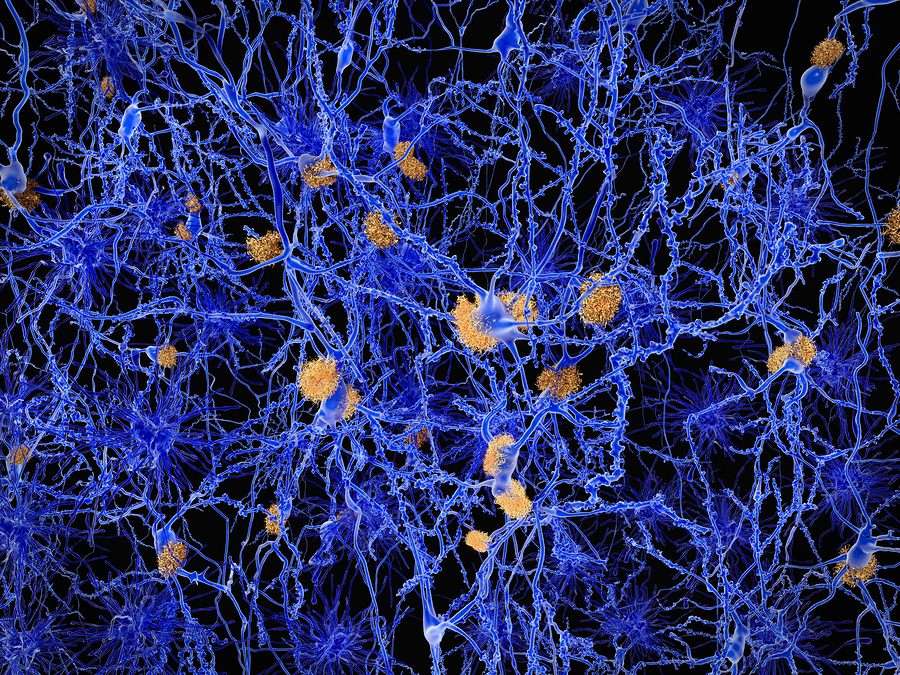A team of researchers at the University of North Carolina’s Medical School believe they may have discovered the ‘ground zero’ of Alzheimer’s disease.
RELATED ARTICLE:
Because Alzheimer’s disease causes abnormal deposits of amyloid beta protein and tau protein in the brain, researchers focused on how the proteins attack the brain. What they found may help drug companies to develop medications that will prevent the proteins from changing and therefore beginning the process of Alzheimer’s.
The team, led by Dr Todd Cohen, assistant professor of neurology:
“…used human cell cultures to show how amyloid beta can trigger a dramatic inflammatory response in immune cells and how that interaction damages neurons.
The team then showed how that kind of neuron damage leads to the formation of bead-like structures filled with abnormal tau protein.
Similar bead-like structures are known to form in the brain cells of people with Alzheimer’s disease.” 1
For the study, Cohen and his colleagues:2
- exposed immune cells normally found in an activated, inflammatory state in human Alzheimer’s brains to tiny clusters of amyloid beta or oligomers (believed to be the most harmful forms of the protein)
- then added protein filled (with inflammatory factors) fluid to cultures of human cortical neurons
- the neurons soon developed abnormal, bead-like swellings along their axons and dendrites (this ‘neuritic beading’ on axons and dendrites has long been seen in Alzheimer’s patients and considered an early sign of neuronal damage but no one was sure how the beading was connected to abnormal tau or if it led to Alzheimer’s disease)
- researchers then looked for tau in the beads and found a larger than expected accumulation of it, though it was in an abnormal form and undetectable with the usual tools scientists use to detect the type of tau typically seen in Alzheimer’s patients (it’s this difference that allows tau to become aggregated)
RELATED ARTICLE:
It’s believed that finding this abnormal tau in the neuritic beads is tau’s introduction to the Alzheimer’s disease process. But Dr Cohen’s lab also found high calcium levels (known to harm neurons and prominent in the neurons of Alzheimer’s patients) in the neurons, as well.
“A team led by collaborating researcher Dr Xian Chen, associate professor of biochemistry and biophysics at UNC, used mass spectrometry to sort out the amyloid beta-induced neuroinflammatory molecules that had triggered the calcium influx and neuritic beading.
The team was able to show that one protein in particular, MMP-9, was responsible for some of this adverse effect.” 3
(It seems that MMP-9 is an inflammatory protein that can trigger a calcium influx which then floods the neuron.)
RELATED ARTICLE:
But researchers were also able to identify the protein HDAC6, which originates from within neurons and concentrates in the neuritic beads, and was believed to detect unwanted protein aggregates within neurons and transport them away for disposal. However, blocking it stopped nearly all beads from forming in Dr Cohen’s lab experiments.
What’s also exciting about this discovery is that blocking HDAC6 or MMP-9 might have applications beyond Alzheimer’s. Neuritic beading is seen in several other neurodegenerative diseases and after a head injury, which means that beading might be, according to Dr Cohen, “a general mechanism underlying cognitive decline.” 4)
Researchers will now focus on creating a mouse model to “confirm and further investigate the amyloid-to-inflammation-to tau process seen in this Cell Reports study.”5
The Alzheimer’s epidemic is coming. Let’s hope researchers figure something out before things get much worse. There are millions of families cheering them on.












